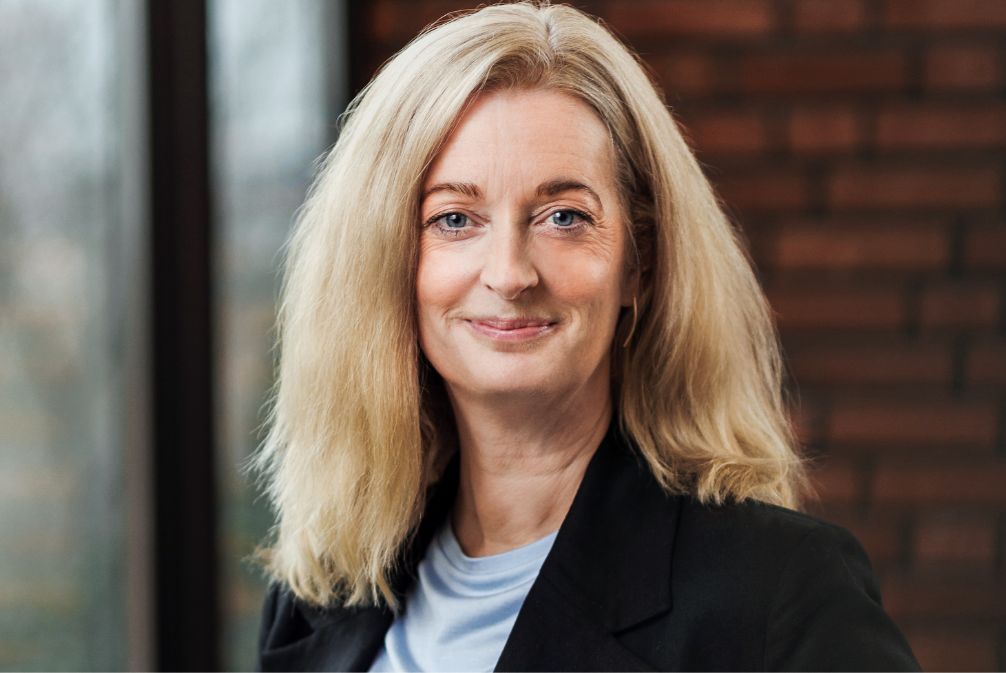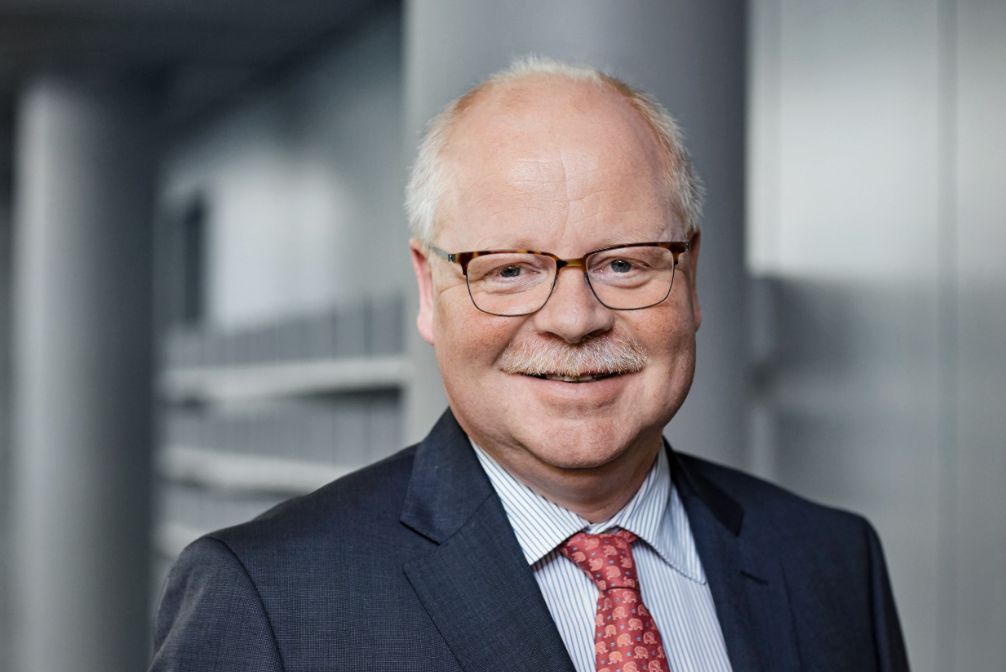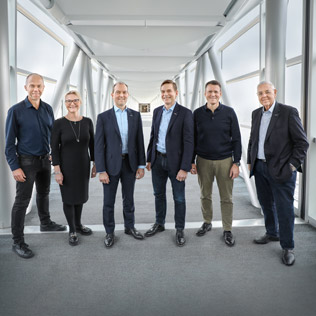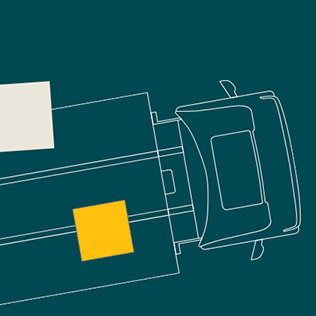Charging
ahead
Electric commercial vehicles are no longer a vision of the future. They are the here and now — the TRATON GROUP and its brands have made sure of that. But no one will buy these vehicles if there are no charging options.
TRATON is driving the development of a European charging infrastructure forward with its investment in the Milence joint venture and its new TRATON Charging Solutions service entity. Customers like DHL Freight are just as keen to see the next steps succeed.

TRATON is confident that the future of transportation is battery electric and intends to invest over €2 billion in electric mobility from 2023 to 2028. Its Scania, MAN, Navistar, and Volkswagen Truck & Bus brands already have electric products in their portfolios. “The only thing standing in the way of the ramp-up of battery electric commercial vehicles is the lack of charging infrastructure,” TRATON GROUP CEO Christian Levin said in May 2023 as he spoke at the Parliamentary Evening co-hosted by TRATON and ABB E-mobility at the Swedish Embassy in Berlin. During this event, Levin was joined by representatives from Milence and DHL Freight and by German and Swedish politicians to discuss the development of charging infrastructure in depth.
So what exactly is TRATON’s contribution? In 2022, the TRATON GROUP joined forces with Daimler Truck and the Volvo Group to set up Milence, a joint venture that aims to build at least 1,700 green energy charging points across Europe by 2027. The first charging hub opened in Venlo in the Netherlands in December 2023. Venlo has strategic significance for international trade and is the ideal starting point for the Milence network. An agreement has also been signed with the Port of Antwerp-Bruges to develop two charging hubs for heavy-duty vehicles with 30 bays by May 2024. Both milestones are the first steps in giving confidence to the market, and demand is already high.
To further accelerate access to charging locations for its brands’ customers, the TRATON GROUP unveiled a new service entity in June 2023. TRATON Charging Solutions connects charge point operators like Milence, the first operator to be contracted directly, with mobility service providers like the TRATON GROUP brands. A one-stop shop for a seamless charging experience across currently twelve European countries, it allows MAN and Scania to share generic capabilities and add brand-specific features for the optimum customer experience. Dr. Petra Sundström, Managing Director of TRATON Charging Solutions, explains: “We have built a certain capability base for Scania and are now reusing it for MAN, which means we can halve the cost. I think it’s a fantastic synergy project.”

“We have built a certain capability base for Scania and are now reusing it for MAN, which means we can halve the cost. I think it’s a fantastic synergy project.”
Dr. Petra Sundström, Managing Director of TRATON Charging Solutions
Dr. Petra Sundström studied computer engineering. She spent the first part of her career in research, before joining the Husqvarna Group in 2014 as Director Group Connectivity. She began working at Sandvik in 2018, first as Head of Digital Business Development, Crushing and Screening and then as VP & Head of Digital Offering. Sundström was appointed Managing Director of TRATON Charging Solutions in 2023.
Learn more
How does TRATON Charging Solutions facilitate the transition to electric vehicles in Europe?
By combining local operators in one system, negotiating better prices as utilization improves, and evaluating passenger car locations that are compatible with trucks, thus giving drivers more places to charge their vehicle. Sundström is confident: “If we can facilitate this shift to electric vehicles for professional traffic, then we’ve done something big in our lives.”
“If we can facilitate this shift to electric vehicles for professional traffic, then we’ve done something big in our lives.”
Dr. Petra Sundström, Managing Director of TRATON Charging Solutions

As Milence and TRATON Charging Solutions work to make charging more accessible, freight forwarders look to increase the number of electric vehicles in their fleets. Uwe Brinks, CEO of DHL Freight, sees these vehicles as a key element of the company’s decarbonization strategy. “However, this technology can only succeed if public charging infrastructure is expanded throughout Europe,” he emphasizes.
Charging infrastructure determines whether companies like DHL Freight decide to make the switch to electric vehicles. In turn, their decision is what stands between Milence and TRATON Charging Solutions using the promise of more electric trucks on the streets in their negotiations and that promise becoming a reality. TRATON’s CEO Christian Levin hit the nail on the head at the 2023 Parliamentary Evening: all of these stakeholders need the right political roadmap for a European charging network. With it, they can plan ahead with confidence, and Europe can move closer to reaching its climate goals.
Three questions for Anja van Niersen,
CEO of Milence

It’s been over a year since Milence was born in 2022. How far have you come?
Back then, we set ourselves a mission: to make the future of European road transportation fossil-free. In other words, to give customers the confidence to purchase electric trucks, knowing that they can charge and travel across Europe. That mission is so important that TRATON, Daimler Truck, and Volvo joined forces to accomplish it. And even though these brands are competitors in other areas, Milence is an arm’s length venture under EU law, creating a level-playing field for its shareholders. This also ensures that the conditions under which all three companies can access our network are the same.
We’ve come a long way since: customers are waiting for us to launch more sites in addition to our first one, which we opened in Venlo in the Netherlands in December 2023. They’re even adjusting their routing to where our stations will be. This is proof that what we are doing is absolutely necessary. And looking ahead, 2024 will be all about working even more closely with the brands, transportation companies, and mobility service providers to actively move the trucks to our locations to get this market going.
What are the main challenges in building a European charging infrastructure and how do you deal with them?
The constrained energy grids are the biggest challenge. Under current EU policy, grid companies are not allowed to build extensions to the grid until there is a request or offer on the table. The EU Action Plan for Grids is definitely a step in the right direction, but until it is fully implemented we have had to adapt our approach: working even more closely with grid companies to find locations that are within reach of our surge areas. Another issue is bureaucracy — countries like Germany and the Netherlands make you wait up to eight months for an answer of whether and when you can get a grid connection.
Availability of plots for electrification is also a problem given the shortage of parking bays along the highways in Europe. So instead of taking up even more of that space, we are building our stations off the highways, where there are distribution centers and enough energy available. That way, we use the right amount of land and the right connection for the right purpose and with the right chance of high utilization, which is good for everybody.
Apart from the charging infrastructure, are there any other factors that are important to Milence’s success?
Yes, people. People are extremely important. Take truck drivers, for example: the current driver shortage means that there will be more drivers needed. You have to make these people feel welcome and safe, and provide them with what they need. This is why our sites will be secure monitored spaces dedicated to trucks. All of them will have sufficient toilets, showers, and the right amenities. Bigger sites will even have washing machines for drivers who are on the road for a long period of time.
In general, understanding what people need is key if you are changing the market like we are: what their drives and insecurities are, how we can guide their motivation. That’s also what a good leader does — supports the team to do whatever they need to do without losing sight of the big picture. We have over 30 different nationalities working at Milence, but they all have one thing in common: they’re not afraid to go the extra mile and they have the drive to make a difference. And that’s exactly the kind of people we need.

“Understanding what people need is key if you are changing the market like we are.”
Anja van Niersen, CEO of Milence
Anja van Niersen studied psychology and began her career working in IT organization, market development, and sales at BSO, later Atos, before shifting her focus to the energy market. She managed the product development team at Alliander and founded Allego in 2013. She ran Allego as Management Director and later as CEO and Chairwoman of the Board from 2013 to 2021. Van Niersen was appointed CEO of Milence in 2022.




